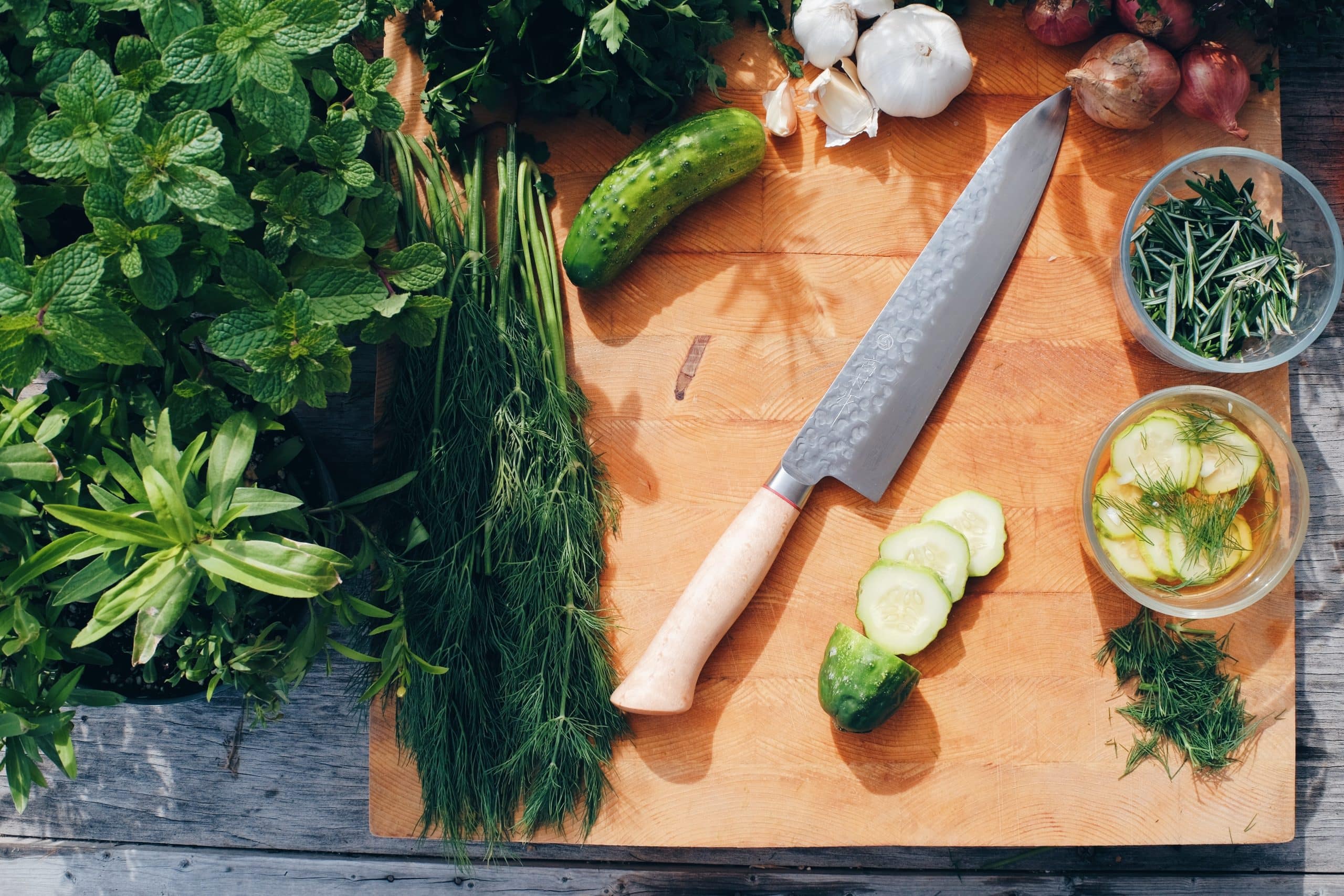What’s the best way to cook with fresh herbs?

Fresh herbs can be a game changer in your kitchen, transforming the most ordinary of dishes with a burst of flavor. Whether it’s the refreshing taste of mint, the earthy fragrance of rosemary, or the bold punch of cilantro, herbs can truly elevate your culinary creations. The choice is abundant, but it can be challenging to know how to use each herb effectively, especially when you’re working with them fresh. In this article, we will guide you through the best ways to cook with fresh herbs, exploring the unique characteristics of some popular varieties, and how to incorporate them into your recipes.
Choosing Fresh Herbs
Choosing fresh herbs is the first step towards creating a flavorful dish. It’s crucial to understand which herbs pair well with the ingredients in your recipe. Basil, for example, with its sweet and slightly peppery flavor, is a staple in Italian and Thai cooking. Freshly chopped basil leaves can be added to a tomato-based pasta sauce, a fresh salad, or even a homemade pizza.
En parallèle : What are the best techniques for searing meat?
Another popular herb is cilantro. Known for its bright, citrusy flavor, it’s often used in Mexican and Asian cuisines. You can add fresh cilantro leaves to a bowl of pho, a salsa, or even a chicken taco to bring a refreshing taste.
Parsley, on the other hand, has a mild and grassy flavor, making it a versatile herb in cooking. You can use it in a variety of dishes, ranging from a hearty chicken stew to a light and refreshing salad.
En parallèle : What’s the best way to smoke meats at home?
The Difference Between Fresh and Dried Herbs
Understanding the difference between fresh and dried herbs is key in cooking. Fresh herbs contain water and have a more vibrant, intense flavor. They are best added towards the end of cooking to preserve their taste and color.
In contrast, dried herbs have a more concentrated flavor due to the lack of moisture. They can withstand longer cooking times and are best added during the cooking process. Be aware that the flavor of dried herbs can be quite potent, so use them sparingly.
Remember, not all herbs transition well from fresh to dried. Some, like basil, lose much of their flavor when dried, while others, like rosemary, retain their powerful flavor even when dried.
How to Prepare Fresh Herbs
Preparing fresh herbs for cooking involves more than just throwing a handful into your dish. First, wash the herbs gently under cold water to remove any dirt or debris. Pat them dry with a towel to remove excess moisture as this can dilute the flavor.
Next, remove the leaves from the stem. For herbs like parsley and cilantro, this can be done by holding the stem at the top and running your fingers down the stem to strip off the leaves. For herbs like rosemary and thyme, hold the top of the stem and slide your fingers down to remove the leaves.
Finally, chop the herbs. Some herbs, like basil and mint, bruise easily, so it’s best to tear them by hand. Others, like rosemary and parsley, can be finely chopped with a knife.
Incorporating Fresh Herbs into Your Dishes
Incorporating fresh herbs into your dishes effectively is an art. For dishes that require a long cooking time, like soups and stews, add hardy herbs such as rosemary and thyme at the beginning. These herbs can withstand the heat and will infuse your dish with flavor over time.
For dishes that are cooked quickly or served cold, like salads or salsas, add delicate herbs like basil, cilantro, and parsley towards the end or as a garnish. These herbs have a more delicate flavor that can easily be lost with too much heat.
Finally, when using fresh herbs in a recipe that calls for dried, remember the general rule of thumb: use three times the amount of fresh herbs as you would dried.
Storing Fresh Herbs
Storing fresh herbs properly can extend their shelf life and maintain their flavor. Most herbs like basil, cilantro, and parsley can be stored in the refrigerator. Place them in a jar with water, like flowers in a vase, and cover with a plastic bag. Change the water every two days to keep them fresh.
Herbs like rosemary and thyme, which have a woody stem, can be wrapped in a damp paper towel and stored in a plastic bag in the refrigerator.
In summary, cooking with fresh herbs can bring a burst of flavor to your dishes. Understanding how to choose, prepare, and incorporate these herbs can help you create culinary masterpieces in your kitchen.
Cooking Techniques With Fresh Herbs
Knowing how to cook with fresh herbs is just as important as knowing which herbs to use. Each herb has a specific flavor profile that can be brought out with the right cooking technique. Olive oil is often used to sauté herbs like rosemary and thyme, releasing their robust flavors. This method is perfect for recipes that require a depth of flavor, like a hearty stew or a roast.
For herbs with a more delicate flavor, like parsley and cilantro, you might want to consider using them raw. Adding them to salads or as a garnish on a finished dish can bring a refreshing zest. Remember, these soft stem herbs don’t hold up well with high heat, so it’s best to add them towards the end of cooking or even after the dish is done.
On the other hand, creating herb-infused oils and vinegars is another excellent way to cook with herbs. Simply add fresh herbs to a bottle of olive oil or vinegar and let the mixture sit for a few weeks. The result is a flavorful addition to your cooking arsenal that can be used in salads, marinades, or as a drizzle over a side dish.
Lastly, another popular method is pit roasting. This involves placing herbs on hot coals, where the food sits directly on top. The heat from the coals cooks the food, and the herbs underneath infuse it with flavor. This method works exceptionally well with sturdy herbs like rosemary and thyme.
Growing Your Own Fresh Herbs
Setting up your own herb garden can be a rewarding experience. Not only do you have access to fresh herbs when you need them, but you also have the freedom to experiment with herbs that may not be readily available in your local grocery store.
When planning your herb garden, consider where it will be located. Most herbs require plenty of sunlight, so a spot with six to eight hours of sunlight is ideal. Herbs generally prefer well-drained soil, so avoid areas where water tends to pool.
Start with easy-to-grow herbs like basil, parsley, and cilantro. These herbs are hardy and adapt well to different conditions. As you gain more experience, you can start adding more unique herbs to your garden.
Remember to water your herbs regularly but take care not to overwater. Most herbs prefer soil that is slightly on the dry side. A good rule of thumb is to water when the top inch of soil feels dry to the touch.
With a little effort and patience, you can have a flourishing herb garden that will provide you with fresh herbs for your culinary creations.
Conclusion
Cooking with fresh herbs can transform your dishes, bringing a new depth of flavor that dried herbs simply can’t match. Choosing the right herbs to pair with your dishes, understanding how to prepare them, and knowing the best cooking techniques are all key to making the most of these aromatic ingredients.
Whether you’re adding a sprinkle of fresh basil to a homemade pizza, infusing olive oil with rosemary for a roast, or garnishing a side dish with fresh parsley, herbs can elevate your cooking to a whole new level. And the satisfaction of using herbs fresh from your own garden makes the entire process even more rewarding.
So, the next time you’re in the kitchen, reach for the fresh herbs and start experimenting. You’ll be surprised at the difference they can make. Happy cooking!
